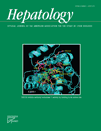Reply:†
Potential conflict of interest: Nothing to report.
We read with great interest the comments by Dr. Maitra regarding our article1 published in HEPATOLOGY. We thank the author for his kind interest in our work and welcome the opportunity to clarify the points raised by him.
First, there is a difference between a field study and a clinic-based study. Despite its fallacies, the measurement of alanine aminotransferase remains the most cost-effective screening tool for significant underlying liver disease, even nonalcoholic fatty liver (NAFL) disease.2 Moreover, an elevated alanine aminotransferase level is one of the components of the various noninvasive scoring systems used for identifying NAFL subjects with advanced liver disease.3 Unfortunately, despite attempts to develop multiple noninvasive (but not necessarily cheap) scoring systems or tests for identifying subjects with nonalcoholic steatohepatitis, liver biopsy remains the ultimate gold standard for diagnosing nonalcoholic steatohepatitis.3
Second, despite the concerns regarding the unconventional forms of ethanol consumption by tribals in India, there were only 35 tribals (1.8%) among the 1911 subjects, and we rigorously excluded alcohol consumption in our study population (see the supporting information for our article1).
Finally, we also speculated about the role of malnutrition in the genesis of NAFL in our population.1 However, in a case-control substudy of subsets of subjects with a body mass index < 18.5 kg/m2, we found that those with NAFL had higher indices of adiposity and a higher prevalence of markers of metabolic syndrome versus those without NAFL (see the supporting tables for our article1). We agree with Maitra that the thrifty phenotype hypothesis,4 introduced approximately 20 years ago to explain the associations between poor fetal and infant growth and the increased risk of developing impaired glucose tolerance and metabolic syndrome in adult life, can play a pathophysiological role in the development of the third-world NAFL phenotype, as highlighted by us.1
References
Kshaunish Das*, Abhijit Chowdhury , * Divisions of Gastroenterology, Institute of Postgraduate Medical Education and Research, Kolkata, India, Hepatology, School of Digestive and Liver Diseases, Institute of Postgraduate Medical Education and Research, Kolkata, India.




